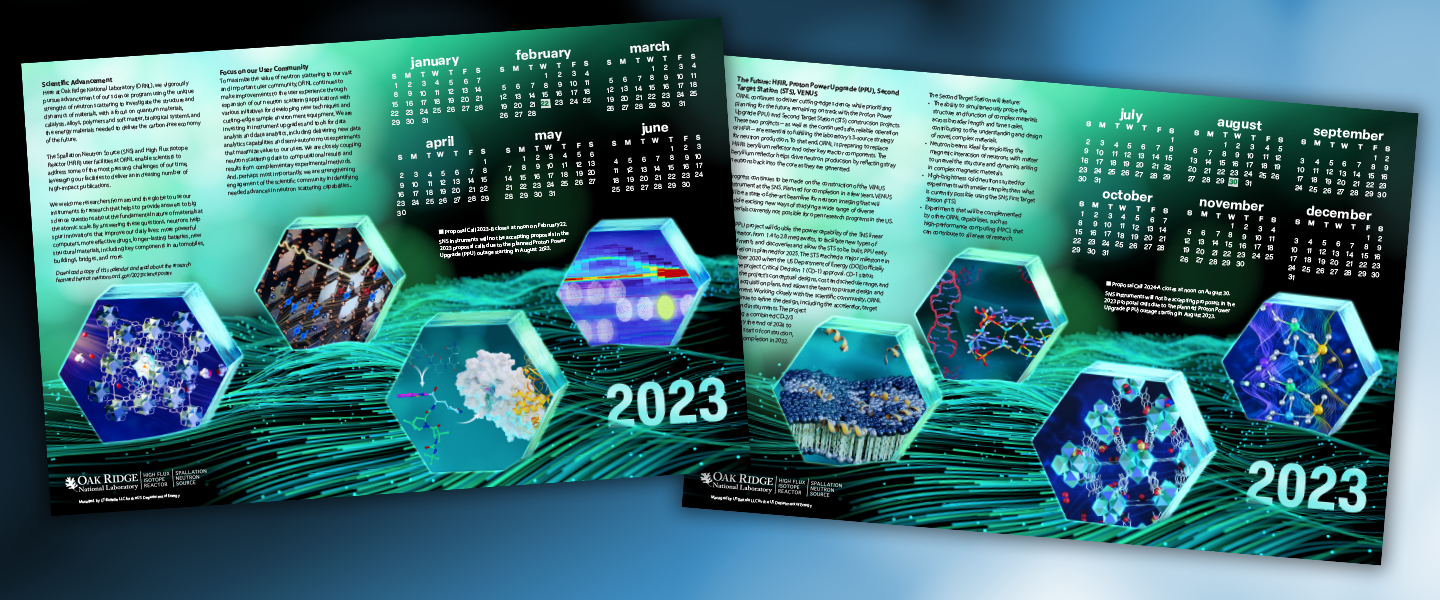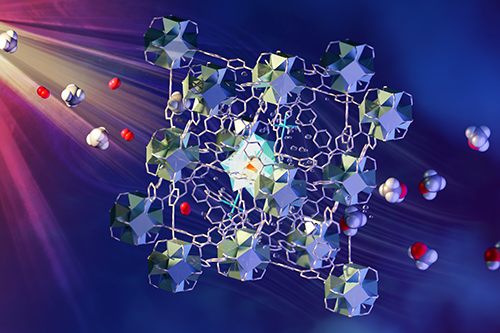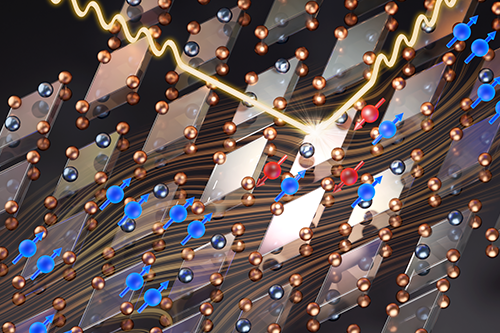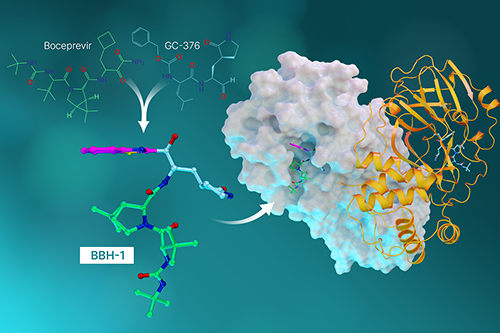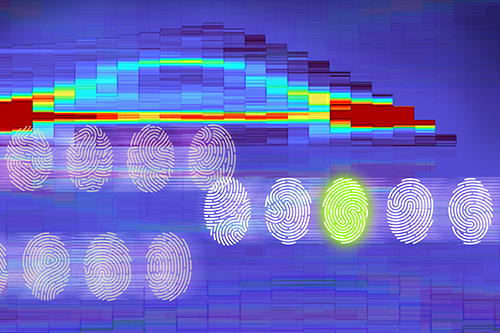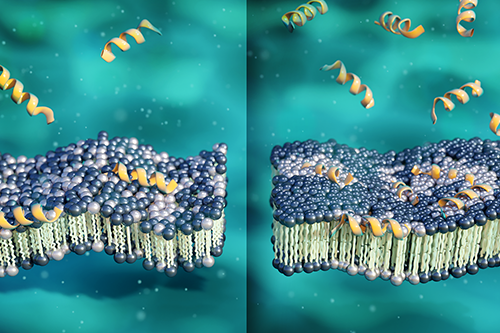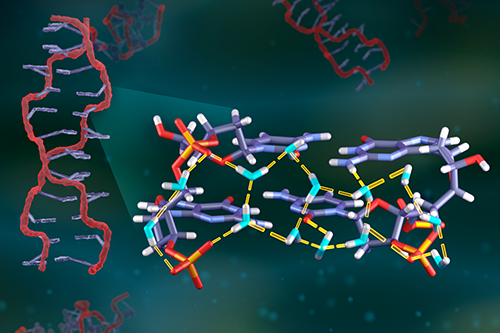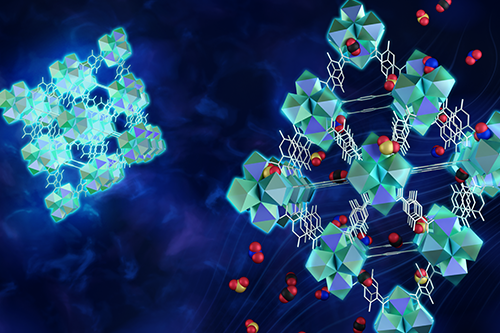2023 SNS and HFIR Calendar Poster
The 2023 Neutron Sciences calendar poster features some of the most significant research and operational achievements made in the last year at the Spallation Neutron Source (SNS) and the High Flux Isotope Reactor (HFIR). 2022 was a return to a new normal and full operations for both facilities as users from around the world were welcomed back to conduct cutting-edge neutron research. New construction milestones were also achieved for the new VENUS imaging beamline, the Second Target Station (STS), and the Proton Power Upgrade projects (PPU).
Found: The ‘holy grail of catalysis’ — turning methane into methanol under ambient conditions using light
An international team of researchers, led by scientists at the University of Manchester, has developed a fast and economical method of converting methane, or natural gas, into liquid methanol at ambient temperature and pressure, under continuous flow over a photo-catalytic material using visible light to drive the conversion.
An international team of researchers, led by scientists at the University of Manchester, has developed a fast and economical method of converting methane, or natural gas, into liquid methanol at ambient temperature and pressure, under continuous flow over a photo-catalytic material using visible light to drive the conversion.
A-list candidate for fault-free quantum computing delivers surprise
Neutron-scattering experiments by physicists from Rice, Oak Ridge National Laboratory, the University of California, San Diego and the National High Magnetic Field Laboratory at Florida State University revealed telltale signs of antiferromagnetic spin fluctuations that were coupled to superconductivity in uranium ditelluride, an A-list material in the worldwide race to create fault-tolerant quantum computers.
Neutron-scattering experiments by physicists from Rice, Oak Ridge National Laboratory, the University of California, San Diego and the National High Magnetic Field Laboratory at Florida State University revealed telltale signs of antiferromagnetic spin fluctuations that were coupled to superconductivity in uranium ditelluride, an A-list material in the worldwide race to create fault-tolerant quantum computers.
COVID-19 research campaign moves from basic science to antiviral drug design
ORNL researchers have developed and tested novel small-molecule antivirals in an effort to design new drugs to treat COVID-19. The so-called hybrid inhibitor molecules are made from repurposed drugs used to treat hepatitis C and the original coronavirus outbreak in the early 2000s. The experimental research results show the molecules are similarly as effective as some of the leading drugs on the market today.
ORNL researchers have developed and tested novel small-molecule antivirals in an effort to design new drugs to treat COVID-19. The so-called hybrid inhibitor molecules are made from repurposed drugs used to treat hepatitis C and the original coronavirus outbreak in the early 2000s. The experimental research results show the molecules are similarly as effective as some of the leading drugs on the market today.
‘No cost’ way to improve neutron scattering resolution by 500 percent
Researchers were measuring spin wave dispersions from a magnetic crystalline material. Unfortunately, the data they obtained from SEQUOIA was slightly distorted by the resolution limits of the instrument, despite its state-of-the-art design. However, the researchers developed a new computational technique using ORNL’s open source software that improved SEQUOIA’s effective resolution by 500 percent.
Researchers were measuring spin wave dispersions from a magnetic crystalline material. Unfortunately, the data they obtained from SEQUOIA was slightly distorted by the resolution limits of the instrument, despite its state-of-the-art design. However, the researchers developed a new computational technique using ORNL’s open source software that improved SEQUOIA’s effective resolution by 500 percent.
Mystery mechanism in small peptide shows big promise for fighting antibiotic-resistant bacteria
Scientists used neutrons to better understand how an antimicrobial peptide known as aurein 1.2 kills antibiotic resistant bacteria by attacking their membranes. As the peptide concentration increases, aurein 1.2 induces lipid molecule clusters within the membrane, making it thicker, more rigid, and more susceptible to break down under stress. The findings could inform new strategies for treating infections where antibiotics have fallen short.
Scientists used neutrons to better understand how an antimicrobial peptide known as aurein 1.2 kills antibiotic resistant bacteria by attacking their membranes. As the peptide concentration increases, aurein 1.2 induces lipid molecule clusters within the membrane, making it thicker, more rigid, and more susceptible to break down under stress. The findings could inform new strategies for treating infections where antibiotics have fallen short.
Neutrons take a deep dive into water networks surrounding DNA
Vanderbilt University researchers used neutrons at ORNL to reveal the hydrogen bonding patterns between water molecules and DNA. The findings could help provide insights into how water influences DNA function.
Vanderbilt University researchers used neutrons at ORNL to reveal the hydrogen bonding patterns between water molecules and DNA. The findings could help provide insights into how water influences DNA function.
Scientists build microporous MOF traps for mitigating toxic gases
Researchers from Sandia, ORNL, and the University of Tennessee-Knoxville used neutron scattering and additional experimental techniques to study a series of materials called metal organic frameworks (MOFs) made from the entire list of rare earth elements. The researchers established a comprehensive approach to evaluating large numbers of MOFs and also made an important discovery about a defect that can be useful in building technologies to mitigate toxic gases such as nitrogen and sulfur dioxides.
Researchers from Sandia, ORNL, and the University of Tennessee-Knoxville used neutron scattering and additional experimental techniques to study a series of materials called metal organic frameworks (MOFs) made from the entire list of rare earth elements. The researchers established a comprehensive approach to evaluating large numbers of MOFs and also made an important discovery about a defect that can be useful in building technologies to mitigate toxic gases such as nitrogen and sulfur dioxides.
Materials – Fresh twist on heat
A discovery by Oak Ridge National Laboratory researchers may aid the design of materials that better manage heat. The team observed that atoms vibrating in a twisted crystal drive winding energetic waves that carry heat, like a corkscrew drives a cork from a bottle.
A discovery by Oak Ridge National Laboratory researchers may aid the design of materials that better manage heat. The team observed that atoms vibrating in a twisted crystal drive winding energetic waves that carry heat, like a corkscrew drives a cork from a bottle.


